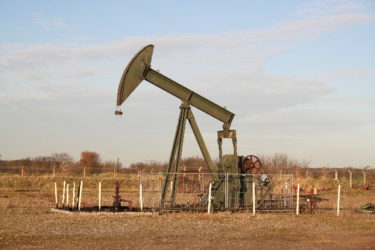
Amid COVID-19, Oil Market Instability Puts Pressure on U.S. Shale
The novel coronavirus, COVID-19, is spreading across the United States, and it is endangering the health of Americans. Meanwhile, Russia and Saudi Arabia are dueling it out in a price war over oil. This market battle, sparked by the economic uncertainty around the coronavirus, threatens the health of U.S. shale oil producers.
On March 6th, Russia and Organization of Petroleum Exporting Countries (OPEC) met to discuss cutting oil production to stabilize oil markets. Their goal was simple: “steady prices by reducing output beyond cuts that were already approved.” OPEC and Russia failed to come to an agreement on reducing supply. Helma Croft with RBC Capital Markets said, “We have just witnessed the perils of backing Putin into a corner.” Many claim that Putin is at fault because he refused the large production cuts proposed by the Saudis: the less oil Russia produces, the more room in the market there is for U.S. shale.
The U.S. shale oil industry uses hydraulic fracking and horizontal drilling to access oil deposits. The industry has used this innovative process to reduce oil imports and compete with foreign oil producers like Russia and Saudi Arabia. However, U.S. shale producers are only competitive at a higher price point: “many sources put the average break-even point for a fracked horizontal well above $60 a barrel with the higher-cost wells coming in at over $90 a barrel.” According to Al Jazeera, Saudi Arabia’s state oil company Aramco can produce crude oil at $2.80 a barrel, while US shale oil producers need a price that is more than 14 times higher to cover their costs. In short, lower oil prices are advantageous to Russia and Saudi Arabia, who can produce crude oil with lower profit margins.
Until recently, the U.S. shale industry had been growing by nearly 1.25 million barrels per day, per year. The price drop has forced shale producers to “[maximize] the efficiency of their operations” or pushed them out of the market. “Shale firms this month cut 25% to 50% of planned spending as falling demand from coronavirus…threw the oil market into a free fall,” according to Reuters.
Seeing an opportunity to push U.S. producers out of the market and claim a larger market share, Russia opted not to comply with Saudi Arabia’s requests for a supply cut. Caroline Bain, the chief commodities economist at Capital Economics, said, “Russia has made no secret of the fact that it is concerned about the growth of the U.S. shale industry and of its view that repeated output cuts by OPEC were effectively handing market share to U.S. producers.”
Russia’s concern stems from its overdependence on oil. The Moscow Times reported a year ago that approximately 60% of Russia’s GDP is made up of natural resources, including oil and natural gas. Eurasia Group analyst Jason Bush said, “Russia’s Achilles heel is its ‘low productivity, weak innovation, and lack of attractive sectors that could attract the investment required for expansion.’” Russia is secure in its ability to produce oil; however, their economy is especially vulnerable to unfavorable shifts within the oil market.
To weather the storm, shale companies laid-off workers and slashed executives’ salaries by more than 25%. The industry clearly needs help. However, a government bailout for the shale industry, will be a hard sell. A letter to President Trump from twenty House Democrats this week said, “Using this public health crisis as an excuse for another giveaway to the fossil fuel industry is badly misguided.” Oil industry representatives are publicly denying the need for a “bailout,” pushing free market ideals instead. “We believe in the free market system and will advocate for policies that support a level playing field to address geopolitical manipulation of the market,” said Anne Bradbury, CEO of AXPC.
Oil markets are volatile, and the recent experience of COVID-19 proves that. Demand for oil was low before COVID-19. However, as manufacturing hubs shuttered around the globe amid the pandemic, demand for oil weakened further. Rather than stabilizing the price of oil and the market, Russia and Saudi’s Arabia price war sent the market into a tailspin. To protect itself from such volatility, the U.S. must continue to invest in alternative energy sources, instead of trying to beat OPEC+ at their own game. Many alternative energy sources—nuclear, wind, solar, hydro—also have lower or zero carbon emissions, and in some instances are more economical than oil. The recent reduction in carbon emissions, as a result of decreased economic productivity during this pandemic, presents an opportunity worth seizing to help secure the U.S.’ energy future and help in the fight against climate change.





